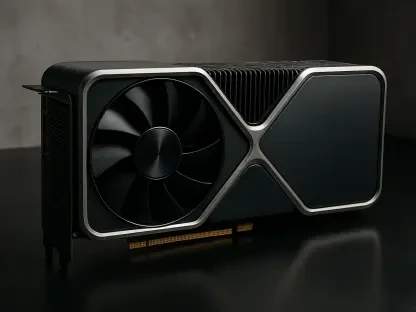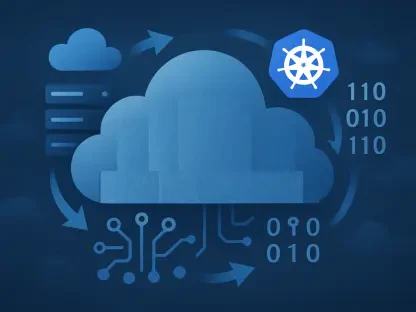In a strategic leap forward, Google Cloud has launched its latest innovation: virtual machines powered by Nvidia’s cutting-edge Blackwell GPU technology, specifically the Nvidia RTX PRO 6000 Server Edition. This development not only establishes Google Cloud as the first provider to deliver this advanced technology but also sets a new standard for cloud computing efficiency and performance. The move underscores Google Cloud’s proactive approach to enhancing capabilities for AI workloads, positioning itself at the forefront of the cloud industry.
Transformative Potential of Advanced GPU Technology
The incorporation of Nvidia’s Blackwell GPUs signifies a major shift in cloud infrastructure evolution. Recent years have witnessed rapid advancements in GPU technology, fundamentally altering how AI, machine learning, and data-heavy applications are managed. Through enhanced processing power and greater memory capacity, technologies like the Blackwell series are poised to streamline complex AI models, ensuring they function with improved efficiency. Therefore, Google Cloud’s integration of such GPUs reflects a strategic milestone, aligning with the ongoing transformation in cloud computing.
Dissecting G4 VM Benefits and Capabilities
Unprecedented Computational Efficiency
Google Cloud’s introduction of G4 VMs delivers exceptional computational prowess using eight RTX PRO 6000 GPUs coupled with high-performance CPUs and processors. The synergy of these components provides remarkable memory bandwidth and capacity, essential for supporting larger AI models and improving data processing throughput. This leap in capabilities impacts numerous sectors by facilitating transformative AI inference, high-end graphical rendering, and simulation acceleration. However, businesses must weigh these benefits against potential cost implications and integration complexities.
Broadening the Spectrum of Applications
With their design accommodating a wide range of applications, G4 VMs exhibit versatility over previous models like the A4 series. This broadened functionality enables real-time content creation, powered by generative AI, and advanced robotics simulation—frontiers that were previously unattainable. Organizations harnessing these capabilities can expect to lead innovation in their respective industries. However, the transition to G4 VMs requires ensuring existing infrastructures can manage high-demand workloads efficiently, mitigating associated risks in deployment.
Global Adoption and Market Dynamics
The deployment of G4 VMs is not uniform across the globe, influenced by varied regional factors, regulatory environments, and technological readiness. Markets exhibit distinct characteristics that affect how and when new technologies are adopted. Moreover, hybrid cloud solutions and localization of services are critical for meeting specific user needs. An informed approach ensures businesses can navigate expectations effectively, optimizing the benefits of GPU-powered VMs as they integrate into strategic operations.
Projecting the Future of Cloud and AI
Nvidia’s Blackwell GPU implementation marks pivotal trends transforming cloud and AI landscapes. Anticipated advancements include the emergence of more sophisticated AI models, supported by robust cloud platforms to surpass current performance benchmarks. The interplay of economic aspects, regulatory shifts, and escalated demands will shape industry trajectories. Future developments point toward cloud solutions becoming not only participants in technological evolution but key drivers of innovation moving forward.
Key Takeaways and Strategic Insights
The significant capabilities introduced by G4 VMs necessitate thoughtful consideration by businesses and developers. Companies should evaluate current and future computational demands and align them with Nvidia Blackwell-powered VM offerings. This involves meticulous planning regarding cost management, infrastructure adaptability, and workforce training in adapting to new technologies. Embracing best practices that exploit these capabilities can effectively position organizations at the cutting edge of technological advancement.
The launch of Nvidia Blackwell GPU-powered VMs by Google Cloud signifies a pivotal moment in cloud computing progression. As industries adapt, this technology becomes an indispensable asset in redefining operational effectiveness and competitive positioning. The long-term impact manifests through widespread enhancements across sectors increasingly reliant on formidable computing solutions. Consequently, Google Cloud’s strategic adoption of cutting-edge technology reiterates its dedication to steering the sector toward an innovative horizon.









